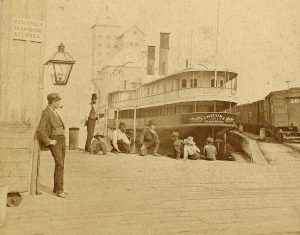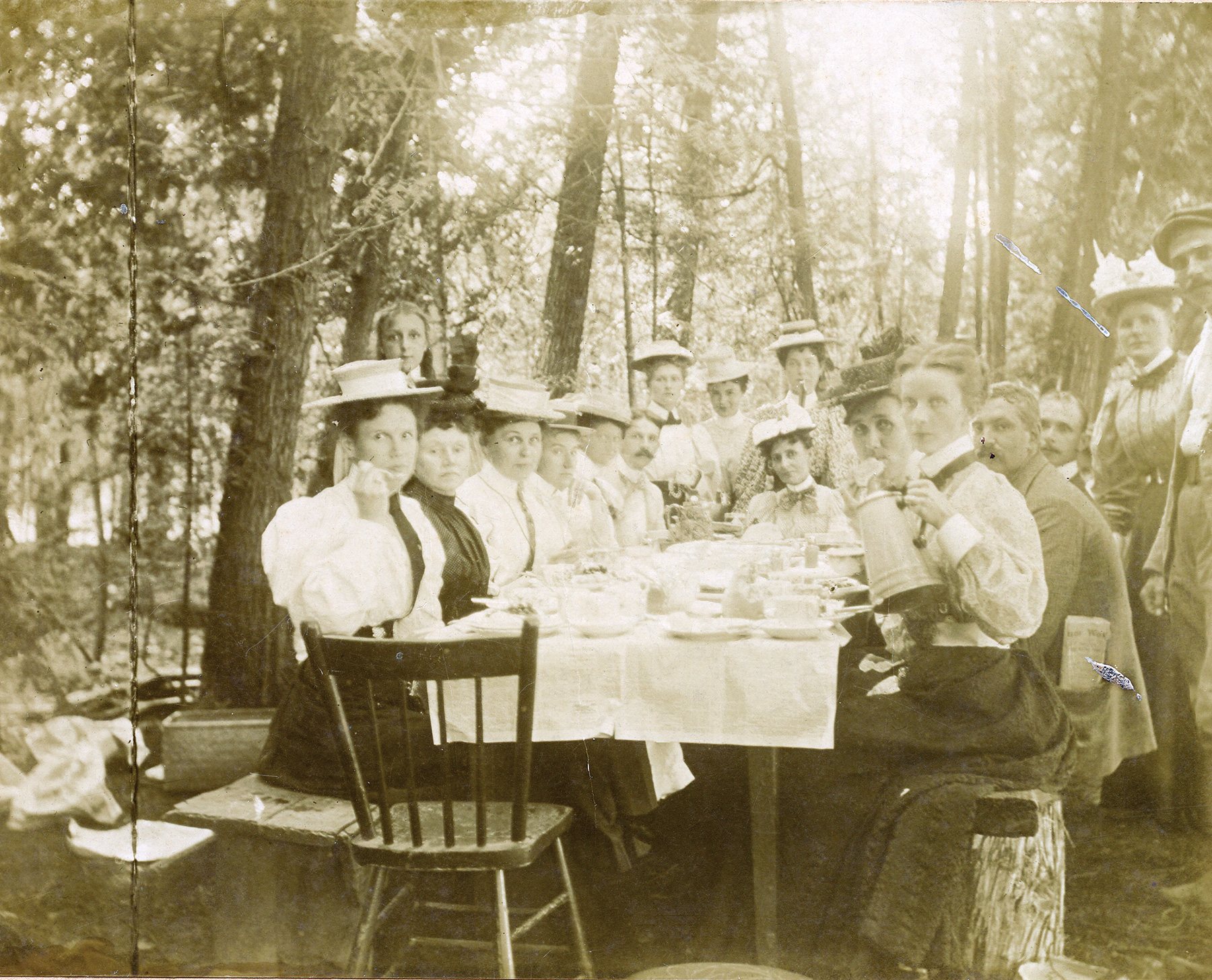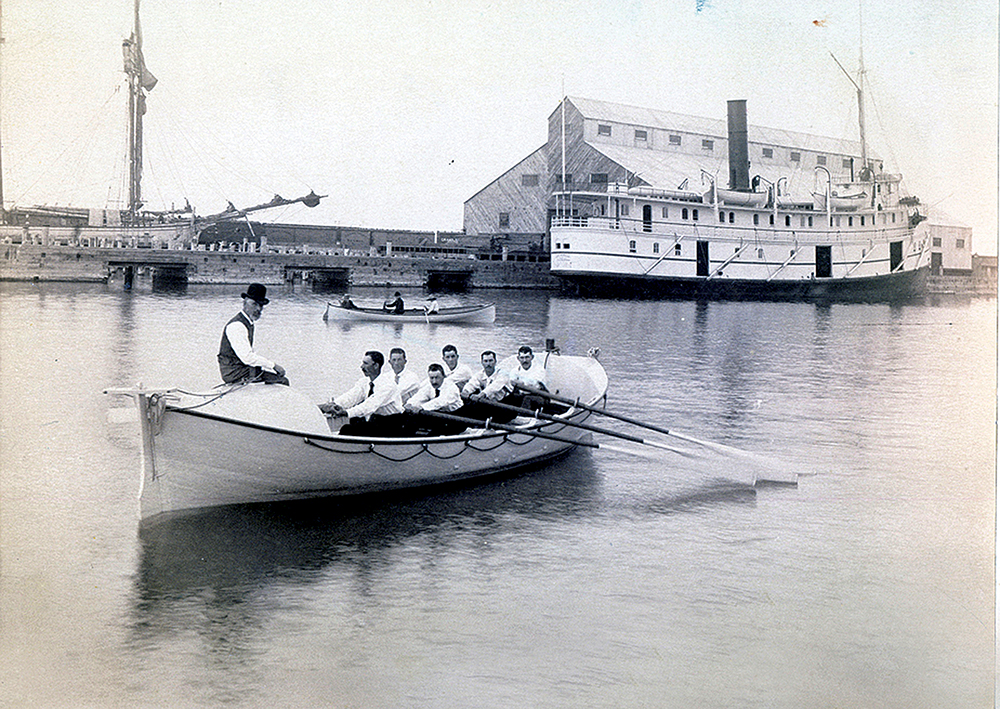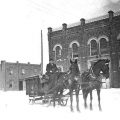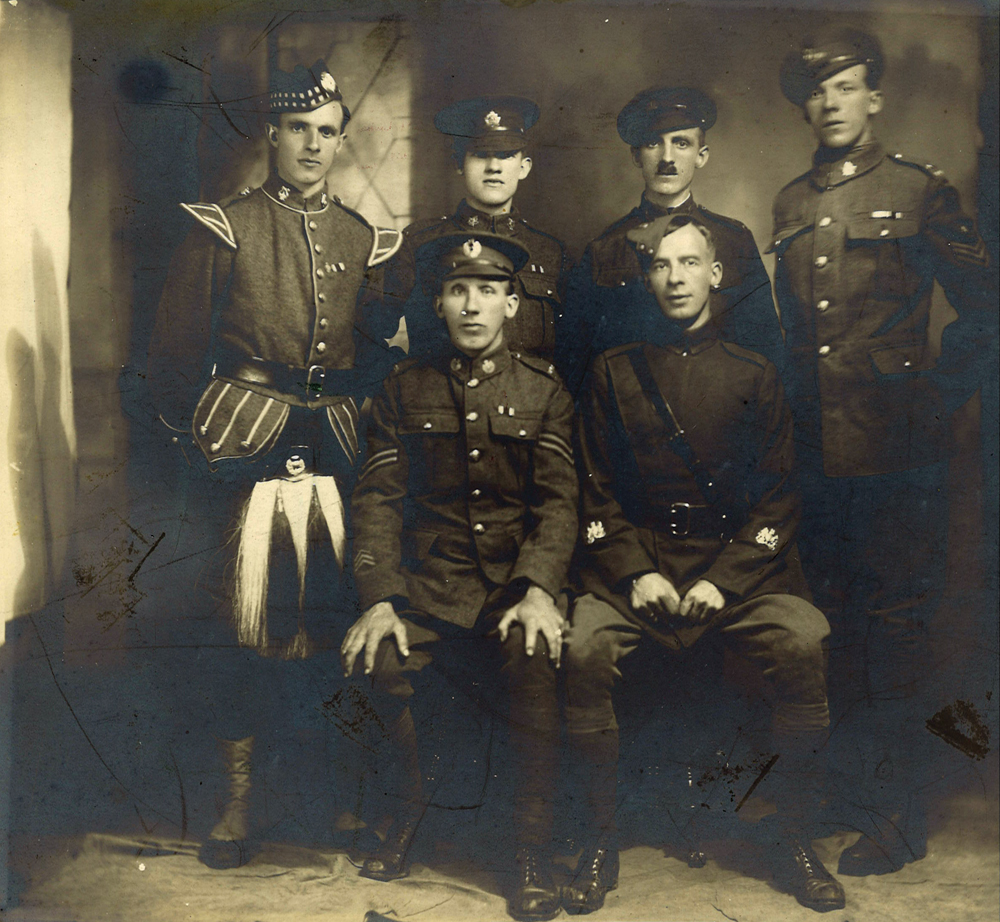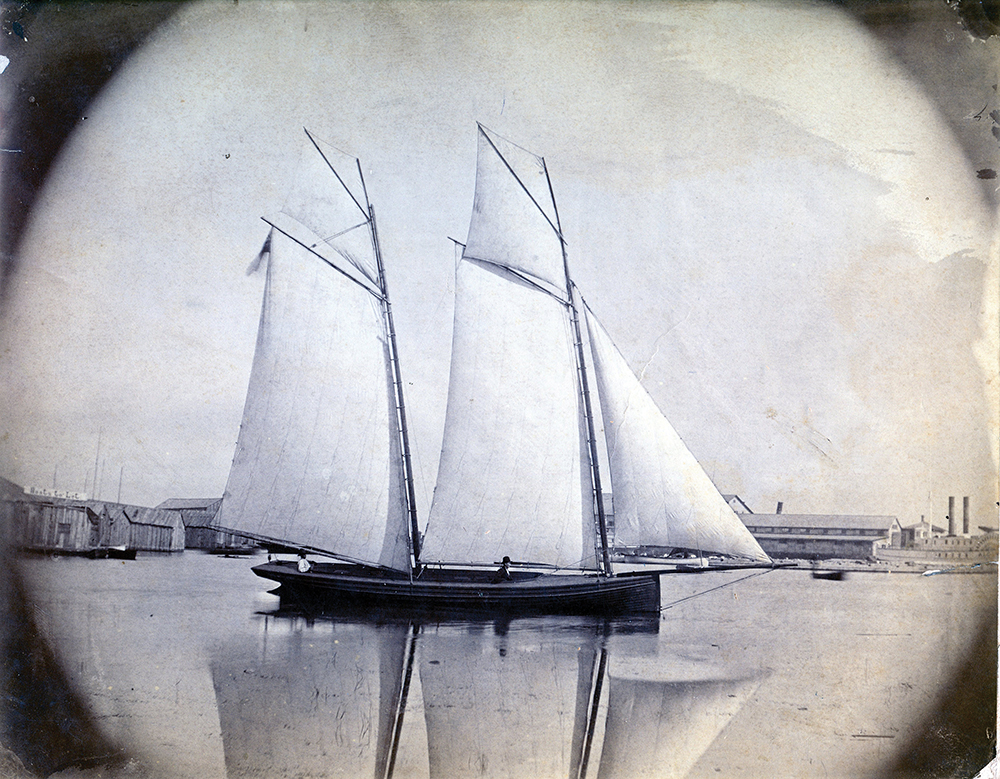The Chicora was one of many vessels that provided passenger transportation to and from Collingwood Harbour in the late 1800s.
The Chicora was one of many vessels that provided passenger transportation to and from Collingwood Harbour in the late 1800s.
This photo, taken on July 23, 1875, shows a group of men and boys waiting to board the steamer. Collingwood’s original, wooden grain elevator can be seen in the background. The train at right likely brought the men to town (until the Canadian Pacific Railway was completed, passengers and cargo came by rail to Collingwood and then transferred to steamships for the trip to points west).
A local businessman noted in his diary that 600 Mennonites had come through town on the day this photo was taken. “No good for town,” he lamented, “Off the train, onto the boat.” His disappointment was understandable: 600 people passing through in one day likely aroused the hopes of local merchants. But the anticipated sales never materialized, because the Mennonites are known to have brought all of their own supplies and tools with them.
Built in England, the Chicora had been a blockade runner during the American Civil War. At the end of the war, the ship found her way to the Collingwood Shipyards, where she was rebuilt and repurposed as a mail carrier and general-purpose vessel. In 1870 she was part of the military expedition heading for Manitoba in the aftermath of the Riel uprising – and, in an incident known as the “Chicora Affair,” was held up by the Americans in the Sault Ste. Marie Canal for several weeks because of her history as a blockade runner – before again being refitted and entering the Toronto-Niagara River passenger trade. ❧
Sources: Collingwood Museum, simcoe.com






